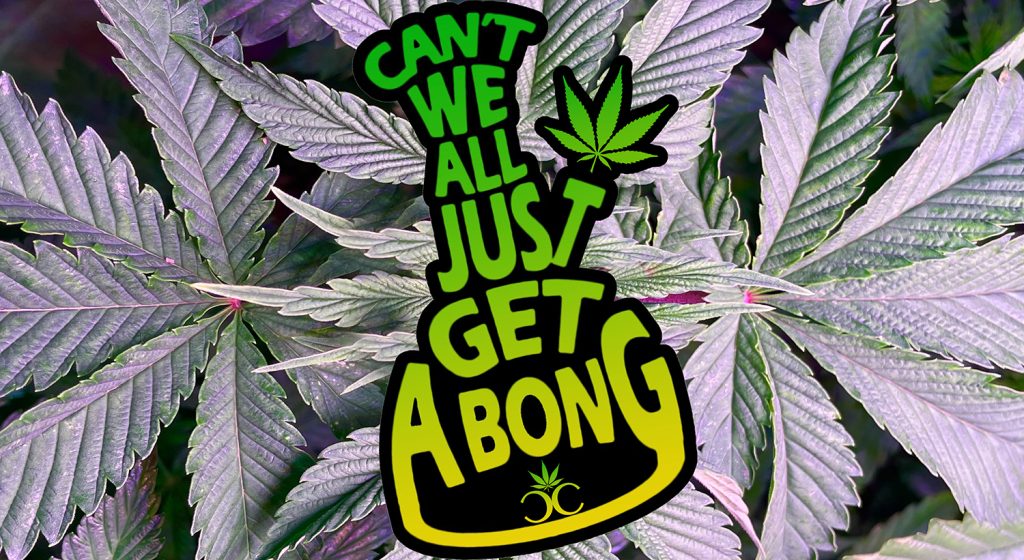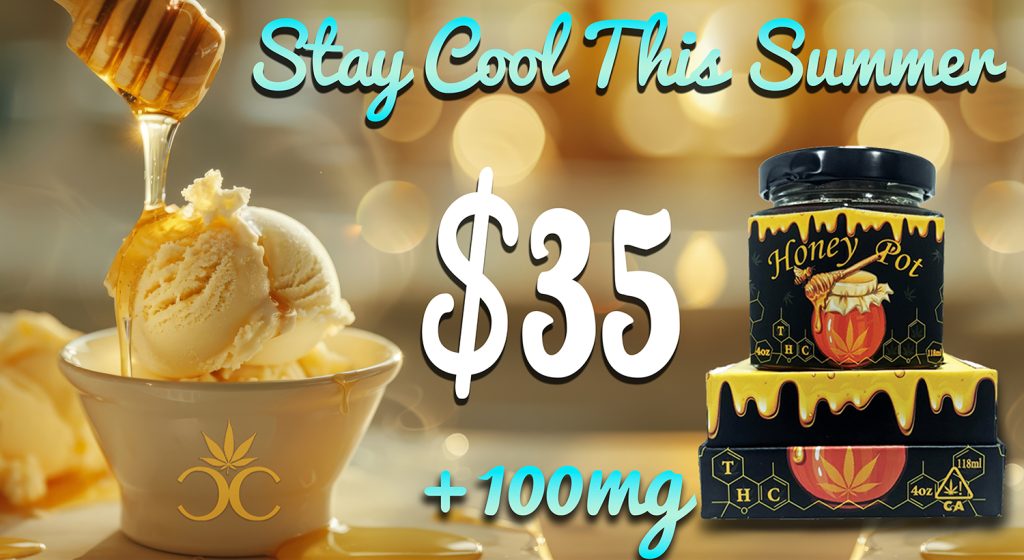
The language of weed is a strange and ever-expanding one, and the fluent often forget that newcomers might not understand them. Weed itself has thousands of alternative names, too, like “antidote,” “broccoli,” “chronic,” “doja,” “dope,” “flower,” “ganja,” “grass,” “jazz cabbage,” “kush,” “pot,” “reefer,” “stank pack,” “sticky,” “zaza,” and many, many more.
As with any other language, new words and phrases are always emerging, and there will be regional variations based on where you live.
If that is the San Jose area, check out the Canna Culture menu for our same-day delivery options. Call (408) 264-7877 to place an order or for more information. Explore our VIP Rewards Program to expand your knowledge with deals and exclusive events, too!
- Canna Culture: San Jose’s premier cannabis dispensary
- Wide delivery radius
- Delivery hours 9 am – 10 pm

Contents
Products
Within the past 20-30 years, thousands of new cannabis products have hit the market. From the original bags of flower to extracts, vast menus of edibles, and CBD products, there is something that suits everyone’s needs; whether that is pain relief or mental bliss. As you walk into the dispensary, weed in its natural, flower form will line the walls. The plant form is often referred to as “bud”, “flower”, or “herb”, and the individual pieces are “nugs” (nuggets). You may also see bags of loose weed called “shake.” A budtender will help you find the right products for your needs.
Indicas, Sativas, and Hybrids
All products are based on one of three strains: indica, sativa, or hybrid. Indica strains are known for their relaxing, sleepy effects, best remembered with the mnemonic device “In-da-couch.” Alternatively, sativa strains are energizing and uplifting, and are usually the strains that cause laughing. The mnemonic device for this is “Sativ-up.” Hybrids are strains that combine different properties of indica and sativa. All of these will have different sub-strains with different effects and varying amounts of tetrahydrocannabinol, or THC.
Weights and Measures
Once you have chosen your strain, you will decide on the amount to purchase. Amount sizes with fraction names are based on ounces; an eighth is ⅛ of an ounce, a quad (or “Q”) is ¼ of an ounce, and so on. These are the most common sizes purchased. (1) You can also purchase amounts in grams. You may want to purchase a grinder to process your weed and to collect the kief; the potent, powdered cannabis trichomes that are often reserved for special occasions.
If it is your first time trying cannabis, we recommend purchasing a lower potency strain recommended by your budtender. You may want to approach things slowly with mids, or
sungrown weed.

Concentrates
Another smokeable option you can find is extract. Also known as dabs, budder, wax, shatter, hemp oil, concentrate, and more, these are made by extracting and concentrating THC from cannabis plants. “resin,” or “rez,” is another term for this, but this can also refer to the soot and oil buildup on frequently-used pipes. These extracts will sometimes be sold in carts (cartridges) that are placed in a battery pen or loose extract to be smoked with a device called a dab rig.
If you prefer to do your shopping unbothered at home, explore our San Jose same-day delivery menu. If you enjoy your experience, consider joining our VIP Rewards program!
Methods of Consumption
There are endless possibilities for cannabis consumption. Different regions will consume different amounts with different methods and through different social norms, but all will fall into one of three categories: smoking and inhaling, digesting, or skin absorption.
Smoking and Inhaling
These methods are the most common among consumers. The user can utilize different smoking devices like bongs, bubblers, or glass bowls, among others. One of the more interesting of these is the Gravity Bong, also known as a “geeb,” “greeb,” “GB,” “grav,” or other regional variations. This setup utilizes a bottle with a hole in the bottom placed into a pitcher of water. When the weed is lit at the top, the user will slowly lift the bottle out of the water to create a vacuum effect inside the bottle to pull the smoke inside. The top is removed and the smoke is inhaled. Bongs can also be adapted into dab rigs. These involve superheating a mug-shaped bowl called a banger with a blowtorch and then covering it with a carb cap to inhale the smoke. Using this method to consume extracts makes the effects much stronger. (2)
Blunts, joints, and spliffs offer a more convenient, “on-the-go” option for consumers, especially pre-rolls. Blunts are cigars that have had their internal tobacco gutted and replaced with weed. Joints are weed rolled in cigarette paper, and spliffs are joints augmented with loose tobacco. Vapes and dab pens (often called the “Penjamin” by Gen Z) are popular for their travel capabilities, ease of use, and concealability. These contain THC extract in a glass ampule surrounding a heating element. When heated, the extract vaporizes and can be inhaled. If inhaling in general is uncomfortable for you, there is always shotgunning. This method involves another person taking a hit and blowing it into your face or mouth. This term is speculated to have originated in the Vietnam War where soldiers would smoke weed from shotguns(!) (3)

Digesting
Cannabinoids are hydrophobic molecules, meaning they do not bind with water. Instead, they are fat-soluble, the key principle to making edibles. (4) The user will feel the effects by consuming this infused fat. One of the most ubiquitous edibles is the beloved pot brownie, but edibles have exploded in popularity and options, with one of the most popular being gummies. (4) The small, individual size of gummies offers convenient and controllable dosing. Consumers may start with a quarter to half of one gummy, then work up to a full one over time, and so on. Much like their non-psychoactive candy aisle counterparts, gummies have a longer shelf life than baked goods. One of the benefits of edibles is that they bypass the health complications associated with smoking. Some other popular forms of edibles are chocolate bars, cookies, beverages, butter, olive oil, and lozenges. (4)
Skin Absorption
Despite thousands of years of humans using cannabis for its medicinal properties, topical products have only recently gained popularity in the West. Research into the skin’s endocannabinoid system — the system responsible for homeostasis — has sparked interest in the benefits of cannabinoids. (5) Consumption of cannabis through these methods is more focused on medicine than recreation. Studies have found terpenes to have anti-inflammatory, anti-bacterial, antioxidant, anesthetic, and antihistimatic properties. By incorporating CBD and terpenes into topicals, consumers can apply these compounds to problem areas to reduce joint pain and to aid muscle recovery, and to treat arthritis, acne, hives, and rashes. Hemp seed oil can also reduce skin drying and aging. (5)
Side Effects
Different strains will have different euphoric effects, and there are some other side effects to watch out for, too.
One of the biggest is “the munchies”. This is a state of intense, insatiable hunger and has shown medical benefits by helping people like chemotherapy patients overcome their nausea to eat. (6) Another well-documented side effect is cottonmouth. Cottonmouth is an intense dry mouth feeling causing an unquenchable thirst, like cotton was placed in your mouth and absorbed all moisture. This can be cured by drinking water. It may be a minor inconvenience if you are at home, but carry water with you elsewhere if you are prone to cottonmouth.
Unfortunately, it is possible to over-indulge, and this is called “greening out”. The good news is that a green out is not life-threatening, and there is no evidence suggesting a THC lethal dose for humans. (7) Overconsumption of THC can overwhelm the body’s cannabinoid receptors, and the brain can become confused as it tries to catch up. This can result in symptoms like anxiety, paranoia and fear, sweating, and nausea. (7) If this happens to you, the best thing to do is tell a trusted friend. They can put you in a calm, relaxed environment where you can feel safe. Green-outs will resolve themselves as the cannabis’ effects fade.
The Chemical Contents and the Science Stuff
Cannabinoids
There are thousands of different compounds in cannabis that prompt responses in the human body. The two most well-known of these are the cannabinoids cannabidiol (CBD) and tetrahydrocannabinol (THC). CBD is non-psychoactive, but has grown in popularity because of its mental and physical therapeutic properties. (8) THC, the main psychoactive compound in cannabis, binds to the body’s CB1 and CB2 receptors in the endocannabinoid nerve system to produce euphoric effects. (9) If the cannabis is smoked, THC will take its full effect within 3-10 minutes. If eaten, effects will kick in sometime between 30 minutes to 2 hours based on metabolism and digestion speed. (9) Other lesser known cannabinoids include CBG, CBN, CBC, CBDA, and THCA.
Terpenes
A class of hydrocarbon molecules vital to cannabis are called terpenoids, terpenes, or “terps” for short. These occur naturally in many plants and are responsible for their distinctive smells and flavors. (10) It is speculated that genus Cannabis developed these as a way to ward off predators.
Cannabis for Delivery in San Jose
To get the lowdown on the latest products, come and see our budtenders in person or order cannabis for delivery in Santa Clara County at Canna Culture. We are ready and waiting to let you know which products would be the best fit for your needs!
For more information, browse our extensive menu, or contact us at (408) 264-7877 if you need a helping hand.
Read the latest cannabis news on our blog.
References
- Bartlett L. A visual guide to the most common measurements of weed. Business Insider. https://www.businessinsider.com/guides/home/weed-measurements
- Hädener M, Vieten S, Weinmann W, Mahler H. A preliminary investigation of lung availability of cannabinoids by smoking marijuana or dabbing BHO and decarboxylation rate of THC- and CBD-acids. Forensic Science International. 2019;295:207-212. doi:https://doi.org/10.1016/j.forsciint.2018.12.021
- Welsh C, Goldberg R, Tapscott S, Medoff D, Rosenberg S, Dixon L. “Shotgunning” in a Population of Patients with Severe Mental Illness and Comorbid Substance Use Disorders. The American Journal on Addictions. 2012;21(2):120-125. doi:https://doi.org/10.1111/j.1521-0391.2011.00201.x
- Barrus D, Capogrossi K, Cates S, et al. Tasty THC: Promises and Challenges of Cannabis Edibles. Methods Rep RTI Press. Published online November 15, 2016. doi:https://doi.org/10.3768/rtipress.2016.op.0035.1611
- Martins AM, Gomes AL, Vilas Boas I, Marto J, Ribeiro HM. Cannabis-Based Products for the Treatment of Skin Inflammatory Diseases: A Timely Review. Pharmaceuticals. 2022;15(2):210. doi:https://doi.org/10.3390/ph15020210
- Turner AR, Agrawal S. Marijuana. PubMed. Published 2020. https://www.ncbi.nlm.nih.gov/books/NBK430801/
- Turner AR, Suneil Agrawal. Marijuana Toxicity. Nih.gov. Published June 3, 2019. https://www.ncbi.nlm.nih.gov/books/NBK430823/
- Varadi G, Zhu Z, Crowley HD, et al. Examining the Systemic Bioavailability of Cannabidiol and Tetrahydrocannabinol from a Novel Transdermal Delivery System in Healthy Adults: A Single-Arm, Open-Label, Exploratory Study. Advances in Therapy. Published online October 29, 2022. doi:https://doi.org/10.1007/s12325-022-02345-5
- Ng T, Gupta V. Tetrahydrocannabinol (THC). PubMed. Published 2022. https://www.ncbi.nlm.nih.gov/books/NBK563174/
- Cannabis Terpenes: What They Are and How They Work. Healthline. Published May 20, 2021. https://www.healthline.com/health/cannabis-terpenes#what-they-are

